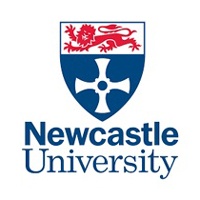
27 Jun PostDoc – Computational Models in Dementia
A 2.5-year PostDoc position for developing computational models of disease progression in dementia patients is available within my lab.
About the project
The most ideal time to intervene with disease-modifying treatment is early on before significant neurodegenerative change and neuronal loss has occurred. However, another highly relevant consideration is improvements in subtype diagnosis i.e. determination of the type of neurodegenerative process giving rise to dementia. Differentiation is crucial as there are
different management trajectories for each disease; for example, neuroleptic drugs which are given to AD can be fatal in the DLB group. Promising preliminary data, using simulation of disease progression, suggest that we may be able to make an early diagnosis even when subtle changes cannot be detected with the current machine learning approach. Going beyond machine learning subtype classification, our study aims to develop a simulation-based model of disease progression that can facilitate early treatment of the disease leading to improved outcomes for patients and reduced overall healthcare costs.
Available RA position
As part of this project, the lab of Prof. Marcus Kaiser (http://www.dynamic-connectome.org/), with joint supervision from the lab of Dr John-Paul Taylor (https://www.lewybodylab.org/), are seeking a talented and enthusiastic research assistant with a PhD awarded, or a PhD thesis about to be submitted, in computational biology or related subjects; prior experience in the neurosciences is desirable.
The aim of this joint project, between Newcastle University and Korea University, is to developing more accurate dementia progression models that can inform diagnosis and treatment of patients using neuroimaging (MRI and PET) data. Objectives of this position are, first, to observe brain network features of dementia patients and how these features are changing with disease progression. Second, to develop computational models of how structural and functional connectivity will change over time in these patients. Third, testing whether the models can reproduce the actual progression and to test different hypotheses about the underlying causes of brain network changes.
Good communication skills, very strong dynamics modelling skills, and a track record of previous peer-reviewed journal publications. You will have experience with neuroimaging and/or computer simulations. The position will include visits to our collaborators in South Korea (Profs Cheol Han and Hyun-Ghang Jeong, Korea University).
Research Environment
Neuroinformatics at Newcastle University in the UK covers a range of topics from electrophysiology to neuroimaging. We are among the pioneers in connectome analysis and the establishment computational models to inform interventions in patients, e.g. through the £10m Wellcome Trust/EPSRC-funded CANDO project. Our strength is a close collaboration between computational, experimental, and clinical researchers. We currently have a team of 13 faculty members in the areas of Neuroinformatics and Neurotechnology: http://neuroinformatics.ncl.ac.uk/
Best,
Marcus
—
Marcus Kaiser, Ph.D. FRSB
Professor of Neuroinformatics
Interdisciplinary Computing and Complex Biosystems (ICOS) Research Group
School of Computing
Urban Sciences Building
Newcastle University
1 Science Square Science Central
Newcastle upon Tyne
NE5 5TG
UK
Lab website: http://www.dynamic-connectome.org/


Sorry, the comment form is closed at this time.